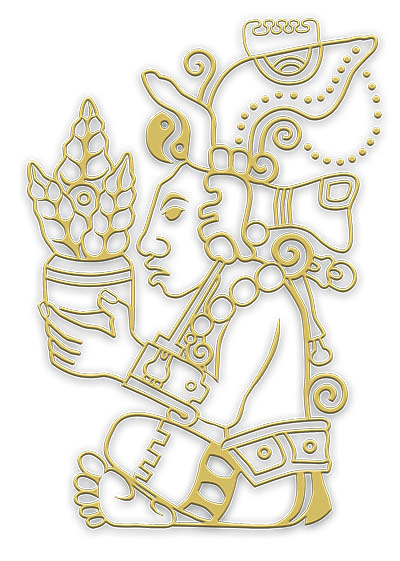Análisis económico: un estudio de caso en Jatropha curcas L. mediante la metodología de presupuestos parciales
DOI:
https://doi.org/10.15517/ma.v29i1.27901Palabras clave:
análisis de costos y beneficios, métodos de ensayo, presupuesto agrícola, toma de decisiones.Resumen
La metodología de presupuestos parciales es una forma de análisis económico importante porque considera que los costos varían entre diferentes tratamientos provenientes de ensayos agrícolas, sin tener que llegar de forma directa a la producción, hecho que no siempre sucede en experimentos de este tipo. El objetivo del presente trabajo fue realizar un análisis por medio de presupuestos parciales en una parcela experimental de Jatropha curcas. Se realizó una evaluación del efecto de cinco productos químicos contra Polyphagotarsonemus latus sobre plantas de J. curcas, estos productos son: hexitiazox (1 ml/l de agua), azufre (10 kg/ha), propargita (4 kg/ha), spiromesifen (0,5 l/ha) y abamectina (1,5 l/ha). Se realizaron dos aplicaciones de los productos, separadas por veintidós días. Luego de cada aplicación se evaluó la cantidad de ácaros (huevos, larvas y adultos) presentes en cada tratamiento. Se empleó la metodología de presupuestos parciales con un ajuste, como forma para determinar cuál era el mejor tratamiento, desde el punto de visto económico. El tratamiento con la mejor relación costo-beneficio fue la abamectina, con valores de TRM (tasa de retorno marginal) de 17,1%, 4,6% y 4,1%, para huevos, larvas y adultos, respectivamente; seguida del spiromesifen con TRM para huevos de 5%, larvas de 1,8% y adultos de 3,8%, y por último, el azufre. Ello indica que el producto con el menor costo no necesariamente fue el producto con los mejores resultados.
Descargas
Citas
AED (Asociación Empresarial para el Desarrollo). 2017. Normas y estándares. AED. http://www.aedcr.com/informacion_rse_normas.php (consultado 18 abr. 2017).
Aguilar, H., y P. Murillo.2012. Nuevos hospederos y registros de ácaros fitófagos para Costa Rica: período 2008-2012. Agron. Costarricense 36(2):11-28.
Cordero, J., F. Mesén, M. Montero, J. Stewart, D. Boshier, J. Chamberlain, T. Pennington, M. Hands, C. Hughes, y G. Detlefsen. 2003. Descripciones de especies de árboles nativos de América Central. En: J. Cordero y D. Boshier, editores, Árboles de Centroamérica: un manual para extensionistas. Editorial OFI/CATIE, Turrialba, CRC. p. 621-624.
Calvo, G., y J. Siman. 1993. Uso de presupuestos parciales de beneficio neto en la evaluación financiera de tecnologías de manejo integrado de plagas. CATIE, Turrialba, CRC.
CIMMYT. 1988. La formulación de recomendaciones a partir de datos agronómicos: un manual metodológico de evaluación económica. CIMMYT, MEX.
French, J. 1989. Métodos de análisis económico para su aplicación en el manejo integrado de plagas. Manejo Integrado de Plagas 18:48-66.
Gutiérrez, M., D. Soto, y M. Alpízar. 1997. Cuarenta años de observaciones meteorológicas en la Estación Experimental Agrícola Fabio Baudrit Moreno. BOLTEC 30(2):1-14.
Harper, K., S. Cornelisse, y L. Kime. 2014. Alternativas Agrícolas: presupuestos para tomar decisiones. Penn State University, PA, USA.
Lopes, E. 2009. Bioecologia de Polyphagotarsonemus latus em acessos de pinhão manso (Jatropha curcas). Dissertação MSc., Universidade Federal de Viçosa. Viçosa, BRA.
Ortiz, O., y W. Pradel. 2009. Guía introductoria para la evaluación de impactos en programas de manejo integrado de plagas (MIP). Centro Internacional de la Papa, Lima, PER.
Perrin, R., D. Winkelman, E. Moscardi, y J. Anderson. 1976. Formulación de recomendaciones a partir de datos agronómicos: un manual metodológico de evaluación económica. CIMMYT, México DF, MEX.
Reyes, M. 2001. Análisis económico de experimentos agrícolas con presupuestos parciales: rediseñando el uso de este enfoque. Boletín Informativo 1-2001. Universidad de San Carlos de Guatemala, GUA.
Sarmiento, E.B. 2012. Efecto y persistencia de glifosato en el cultivo de cacao. Tesis Lic., Universidad Técnica del Norte, Ibarra, ECU.
Valdivia, R. 2011. Análisis económico de los ensayos realizados por los comités de Investigación Agrícola local. Catholic Relief Services, Baltimore, MD, USA.
Publicado
Cómo citar
Número
Sección
Licencia
1. Política propuesta para revistas de acceso abierto
Los autores/as que publiquen en esta revista aceptan las siguientes condiciones:
- Los autores/as conservan los derechos morales de autor y ceden a la revista el derecho de la primera publicación, con el trabajo registrado con la licencia de atribución, no comercial y sin obra derivada de Creative Commons, que permite a terceros utilizar lo publicado siempre que mencionen la autoría del trabajo y a la primera publicación en esta revista, no se puede hacer uso de la obra con propósitos comerciales y no se puede utilizar las publicaciones para remezclar, transformar o crear otra obra.
- Los autores/as pueden realizar otros acuerdos contractuales independientes y adicionales para la distribución no exclusiva de la versión del artículo publicado en esta revista (p. ej., incluirlo en un repositorio institucional o publicarlo en un libro) siempre que indiquen claramente que el trabajo se publicó por primera vez en esta revista.
- Se permite y recomienda a los autores/as a publicar su trabajo en Internet (por ejemplo en páginas institucionales o personales) antes y durante el proceso de revisión y publicación, ya que puede conducir a intercambios productivos y a una mayor y más rápida difusión del trabajo publicado (vea The Effect of Open Access).
























